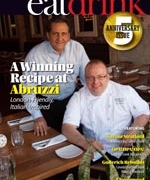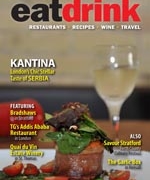Broken English: Lessons Given and Received in South Korea
I may have broken the English language. I may have inflicted a disservice to the linguistic excellence of my mother tongue. I may have shattered the pristine image of the modern world’s lingua franca. I’m sorry I broke it, but giving English lessons to children in South Korea wasn’t easy. Being an ambassador of English, I had all the more reason to treat the language properly, I know; but I wasn’t getting through to them with my wordy sentences, so I needed to break them down.
Teaching English in a foreign country is one of the most fascinating careers in the world: every country has its own idiosyncrasies and every classroom has its own set of challenges. Typically, the most difficult challenge is the language barrier between student and teacher. English is obviously the focus of any lesson plan, but it can also be an obstacle when students don’t understand instructions. The point of me being in the classroom was to teach conversational English, so I simply needed to talk and be heard. But I also needed to get through to the students and my university degree in English did not give me the skills to do that. It didn’t matter that I knew how to use a diphthong or a digraph. Communication was the key, not teaching the finer points of grammar or even speaking in proper sentences. With these students, paradoxically, the more words used, the less likely communication was achieved.
In the interest of exposing the students to English, for them to get optimal exposure to as many words as possible, it was actually good that I couldn’t speak Korean. I had to get my point across in English or else my classes became moot (and mute). This led me to make adjustments. I started speaking like my students. I simplified my language to its most basic parts. My sentences were only a few words long, more like commands or quite often one-word pleas. I spoke in nouns and verbs. No prepositions or conjunctions. Sometimes a few adjectives got thrown in, but they were mostly for my own amusement and added nothing to the understanding of the students. Filler words, which I love fiddling with as a writer, had fallen by the wayside in my speech patterns with these students.
For instance, there would be little response when I said, “Please take out your books so we can begin the lesson for today.” But when I simply said “Books” I got the desired effect of the students digging their textbooks from their backpacks. They understood what I meant when I said “Time” even though I really wanted to say, “I’ll be leaving the classroom for a short time, and it’s not likely that you’ll wait quietly until I return, but it would be much appreciated if you could try.”
Simplistic – yes. Grammatically correct? Absolutely not. Condensing sentences into simple, short, often one-word sentences was effective for students who lost focus if my instructions were too long, but I felt as if I were taking a step backward by speaking in monosyllables. If I were to have a conversation with an English-speaker in this way, it would be considered juvenile at best and inexplicable at worst, but a class of Koreans would acknowledge me without question. I hope I’m not making myself dumb by teaching in this way, by speaking in mono-syllables, because the point is not to make me or the students dumber then when we started. It is a bit disheartening when trying to give students the gift of a new language. I couldn’t keep it up if I wanted to teach effectively. In order to fix my broken English and teach my students more than just a list of vocabulary words, I knew my conversation style needed some further alterations.
The next step was to use as many full sentences as possible. If a sentence was received with blank stares, I would repeat it with a strong emphasis on the nouns and verbs. Even if they couldn’t grasp the entire sentence, the students understood my instructions by picking out the main words they could recognize, and I was confident that the filler words would come with time and practice. Korean students are nothing if not good copiers. They treat regurgitation as a form of art. But if that’s the way they do it, then so be it, because they learned English more quickly and easily than I learned Korean. They didn’t so much learn English words as copy sounds coming from my mouth – and hearing as many complete sentences as possible was the best way to improve their conversational skills.
My newest process was obviously longer, but the students were in the classroom to listen to me talk and to converse in a similar manner, so it was better for them to hear and repeat as many full sentences as possible. Education is an evolutionary process; being attentive to how my students reacted to my words taught me how to be a better ESL instructor. By-the-book techniques work most of the time, but it’s improvisational and spontaneous teaching that sometimes gives the students the breakthroughs they need. Teaching styles require alteration along the way so students don’t fall behind in acquiring English skills. My students and I may have been breaking the rules of grammar, but we were learning together what it took to communicate. I can’t claim to have remedied the ills of a language, but at least now I can give the Korean children lessons that aren’t broken.







